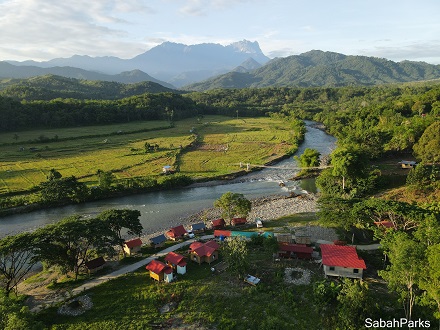UNESCO’s Executive Board has endorsed the addition of 18 sites to the UNESCO Global Geoparks network. This brings the total number of geoparks to 195 in 48 countries. Two UNESCO Member States joined the network: New Zealand and the Philippines.Kinabalu Geopark achieved the UNESCO Global tag.
The UNESCO Global Geopark label was created in 2015. It recognizes the geological heritage of international significance. Geoparks serve local communities by combining the conservation of their significant geological heritage with public outreach and a sustainable approach to development. The 18 new designations have brought the network up to 195 UNESCO Global Geoparks, covering a total surface area of 486,709 km2, equivalent to twice the size of the United Kingdom.
The newly added Geoparks are Caçapava UNESCO Global Geopark and Quarta Colônia UNESCO Global Geopark from Brazil; Lavreotiki UNESCO Global Geopark, Greece; Ijen UNESCO Global Geopark, Maros Pangkep UNESCO Global Geopark, Merangin Jambi UNESCO Global Geopark and Raja Ampat UNESCO Global Geopark from Indonesia; Aras UNESCO Global Geopark and Tabas UNESCO Global Geopark in Iran; Hakusan Tedorigawa UNESCO Global Geopark, Japan; Kinabalu UNESCO Global Geopark, Sabah in Malaysia; Waitaki Whitestone UNESCO Global Geopark, New Zealand; Sunnhordland UNESCO Global Geopark, Norway; Bohol Island UNESCO Global Geopark, Philippines; Jeonbuk West Coast UNESCO Global Geopark, Republic of Korea; Cabo Ortegal UNESCO Global Geopark, Spain; Khorat UNESCO Global Geopark in Thailand and Mourne Gullion Strangford UNESCO Global Geopark in United Kingdom of Great Britain and Northern Ireland.


Mr. Hajiji Noor, Chief Minister of Sabah State in Malaysia has informed the Sabah State Assembly that the Aspiring Kinabalu Geopark is now officially declared as the KINABALU UNESCO GLOBAL GEOPARK and this is an outstanding achievement of the Government of Sabah under the “Sabah Maju Jaya” roadmap through the Ministry of Tourism, Culture and Environment and Sabah Parks.
KINABALU UNESCO GLOBAL GEOPARK Covering an area of 4,750 km2, adds significant value to the existing eco-tourism products in Sabah. It is home to many endemic plants and animals, including 90 orchid species that exist only on Mount Kinabalu, and the crimson-headed partridge bird not found anywhere else on Earth will bring direct and indirect benefits to the socio-economic of Sabah, particularly to more than 290,000 local communities within the district of Kota Belud, Kota Marudu, and Ranau.
Also Read
Air India Unveiled its new logo
Watch on Youtube
